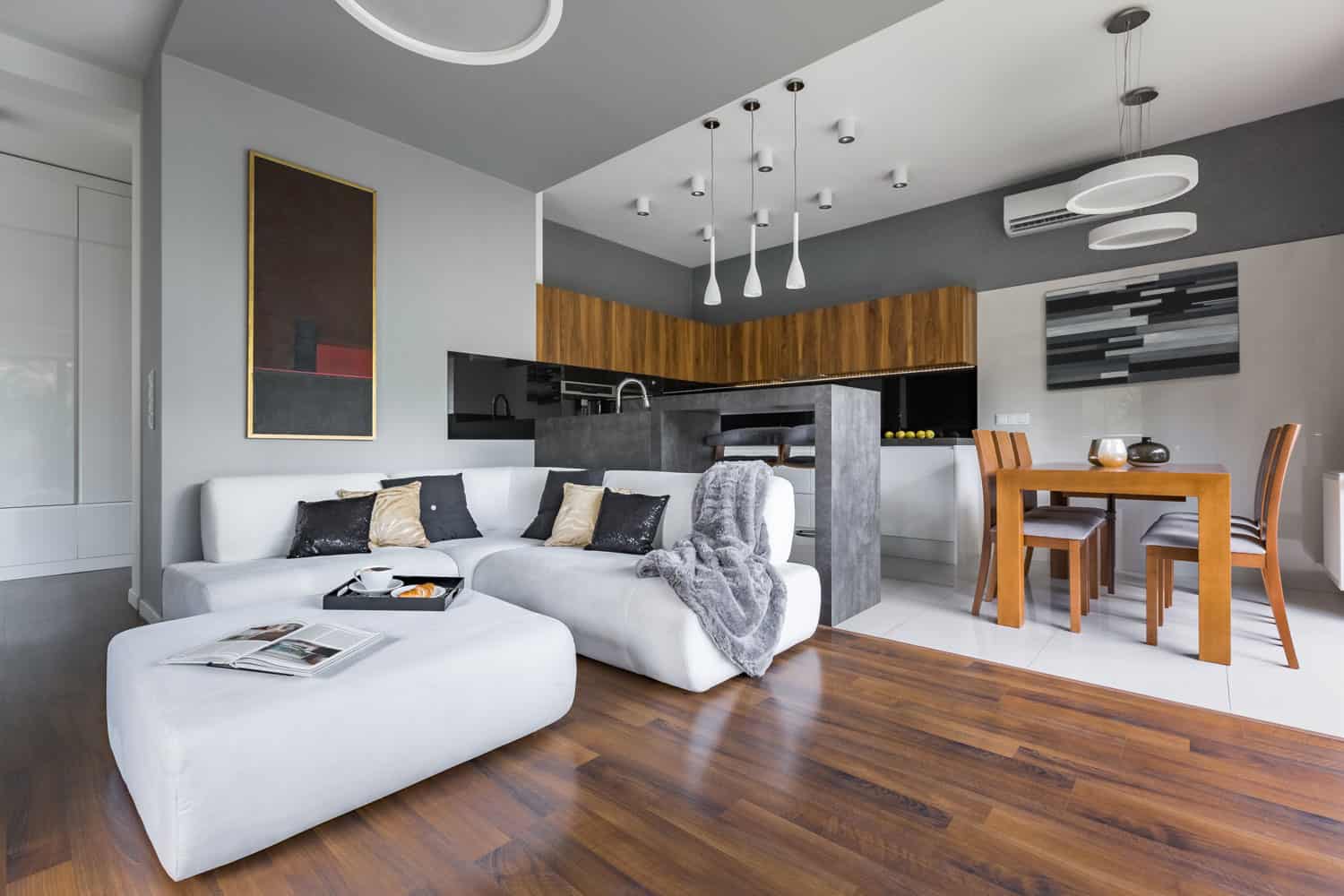Have you ever wondered if tile flooring contributes to the chilly atmosphere in your home during colder months?
The explanation behind this common observation involves a bit of science. Unlike what many people assume, tile floors do not inherently lower the temperature of your home.

However, they do dissipate heat more quickly compared to other flooring options like wood or carpet.
Let’s find out more about the specifics to understand how tile flooring makes your home feel colder.
Understanding Tile Floor Temperature
Tile flooring has a high rate of heat conductivity. This is especially true for ceramic tiles, with rates reported from between 0.6 to 1.7 W/m-K.
When you step on a tile floor, it feels cool because it's excellent at pulling heat from your warm feet much faster than materials like carpet or wood.
This efficient heat transfer can make your home feel colder, especially during the winter season.
Interestingly, though, the same property helps keep your house cooler in the hot summer months, making tile a popular choice for homes in warm climates.
So, Does Tile Make Your House Colder?
No, the tile itself doesn’t lower the temperature of your home. But the way it interacts with heat can influence the perception of temperature within your space.
In other words, the cold feel of tile flooring is more about the transfer of heat rather than a change in ambient temperature.
As explained, the thermal properties of the tile contribute to a cooler tactile experience while not lowering the room’s actual temperature.
Hence, while tiles might make your home feel colder in winter, they don’t actually affect the overall temperature of your home.
What Factors Are Behind the Cold Sensation of Tile Flooring?
The cold sensation of tile flooring comes from a mix of the material’s properties and the surrounding environmental conditions.
Here are the other key factors to consider:
Underneath Conditions
The temperature you feel on tile floors is influenced by what’s beneath them. The concept of thermal conductivity we shared earlier plays a big role here.
Take, for example, tiles over a concrete slab or in a cooler basement. They’re going to feel colder.
This is because concrete has a knack for transferring heat away from the tiles, more so than other materials.
In contrast, tiles laid over something like a wooden subfloor will give you a warmer sensation.
Wood isn’t as quick to pull heat from the tiles, which means it helps keep some of that warmth in, compared to the chill of concrete.
For more on pairing tile with other flooring types, check out this insightful article.
Temperature and Airflow
The feel of tile flooring can also be affected by temperature and how air moves in a room.
The simple idea is that hot air rises and cold air sinks due to density differences. Colder air naturally settles near the floor, affecting the floor’s temperature.
The way air moves in your room from drafts or ventilation systems can bring in more cold air or mix warm air around the floor, changing how cold the tile feels.
Poor Encapsulation of Crawl Spaces
If the crawl spaces under your kitchen and basement aren’t closed off well or don’t have insulation, the tiles on the first floor above can get really cold.
This is because these open spaces let in cold air that pulls the warmth out of your floor.
Radiant Heating for Floors
If you’re worried about tile floors making your house colder, consider installing radiant floor heating.
Radiant floor heating is known for its energy efficiency. By working primarily through infrared radiation, it can be more efficient than traditional heating systems that only warm the air.
We may include affiliate links and curated AI content to highlight top design styles.
Learn more about this radiant heating system on Amazon.
Besides that, the even distribution of heat eliminates cold spots and provides a more comfortable environment in your home.
With the added advantage of being easily controlled through programmable thermostats or smart-home systems, managing the temperature of your radiant floor heating is convenient.
This control can contribute to further energy savings, especially during the warmer months when heating may not be necessary.
A Few Strategically Positioned Rugs Can Bring Warmth
If you like the look and easy care of tile flooring but don’t like the cold feel in the morning and the extra cost radiant heating entails, how about adding a few well-placed rugs?
Rugs are a cost-effective way to add warmth and style. They work well in naturally colder areas, such as basements or rooms with stone floors.
Wool rugs are great for keeping rooms warm. Their thick fibers hold in heat, so they’re perfect for places like bedrooms and living rooms.
Just don’t forget to pair your rug with a quality pad designed for tile floors to maximize comfort and protection!


![Tile setter applying thinset to a single tile, Will Thinset Stick To Formica [Answered] - 1600x900](https://homedecorbliss.com/wp-content/uploads/2023/08/shutterstock_1734268679-600x338.jpg)
![The working tiler removes the glued tile from the wall, the technology of professional and highly skilled tile work - How to Remove Mortar From Old Tiles For Reuse [the Ultimate Guide]](https://homedecorbliss.com/wp-content/uploads/2023/08/The-working-tiler-removes-the-glued-tile-from-the-wall-the-technology-of-professional-and-highly-skilled-tile-work-600x400.jpg)
